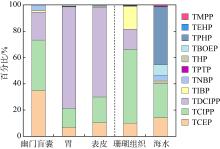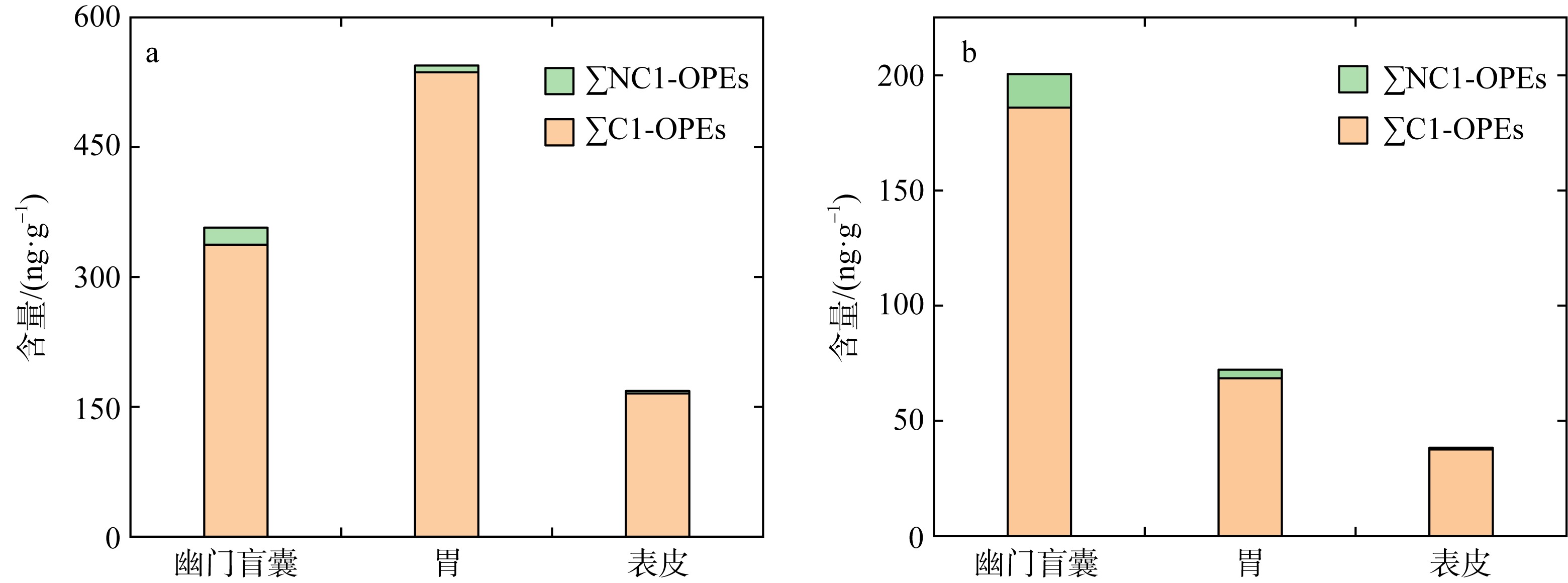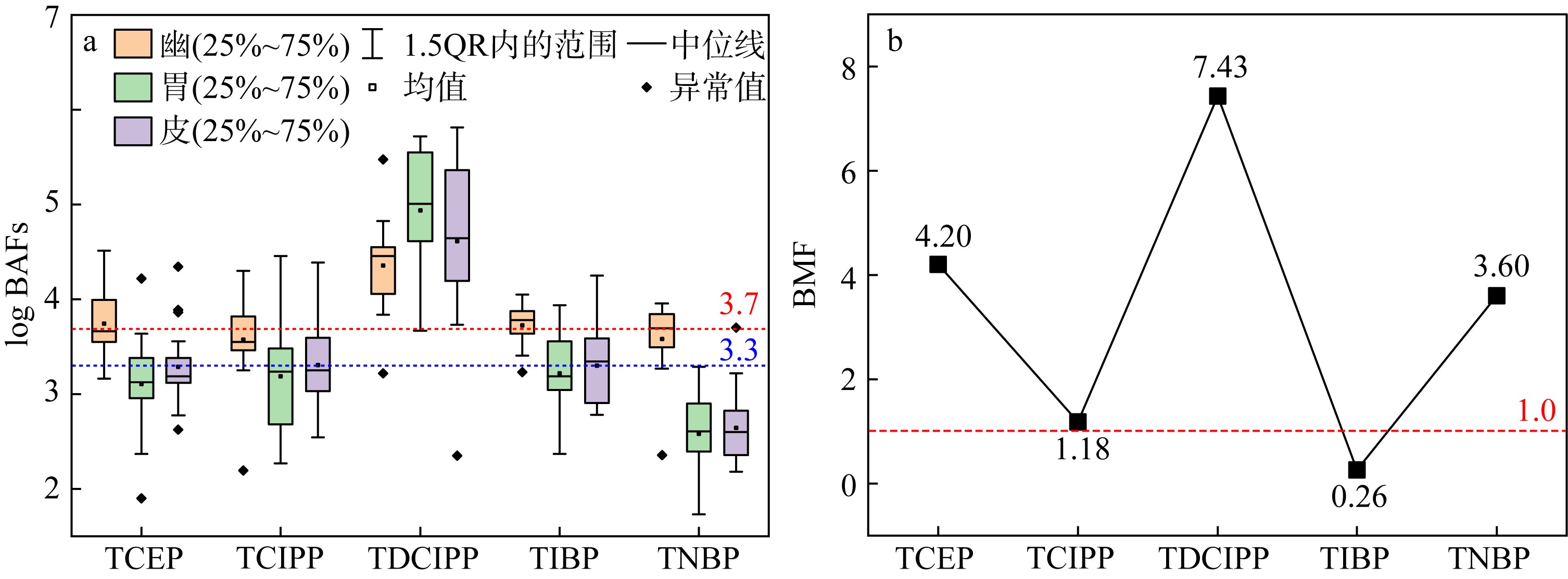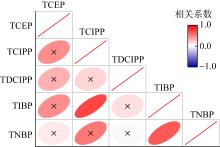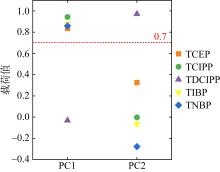| [1] |
李厚金, 李淑青, 王丰, 等, 2009. 长棘海星的体内脂肪酸成分及其生物学意义分析[J]. 中山大学学报(自然科学版), 48(5): 55-60.
|
|
LI HOUJIN, LI SHUQING, WANG FENG, et al, 2009. Chemical constituents and its biological analyses of the fatty acids from the whole body of Starfish Acanthaster planci[J]. Acta Scientiarum Naturalium Universitatis Sunyatseni, 48(5): 55-60 (in Chinese with English abstract).
|
| [2] |
李元超, 梁计林, 吴钟解, 等, 2019. 长棘海星的暴发及其防治[J]. 海洋开发与管理, 36(8): 9-12.
|
|
LI YUANCHAO, LIANG JILIN, WU ZHONGXIE, et al, 2019. Outbreak and prevention of Acanthaster planci[J]. Ocean Development and Management, 36(8): 9-12 (in Chinese with English abstract).
|
| [3] |
廖梓聪, 李会茹, 杨愿愿, 等, 2022. 有机磷酸酯(OPEs)的环境污染特征、毒性和分析方法研究进展[J]. 环境化学, 41(4): 1193-1215.
|
|
LIAO ZICONG, LI HUIRU, YANG YUANYUAN, et al, 2022. The pollution characteristics, toxicity and analytical methods of organophosphate esters (OPEs) in environments: A review[J]. Environmental Chemistry, 41(4): 1193-1215 (in Chinese with English abstract).
|
| [4] |
吕佳佩, 张振飞, 刘杨, 等, 2020. 太湖重点区域多介质水体中有机磷酸酯的分布特征及来源解析[J]. 环境科学, 41(12): 5438-5447.
|
|
LYU JIAPEI, ZHANG ZHENFEI, LIU YANG, et al, 2020. Distribution characteristics and source identification of Organophosphate Esters in key waters areas of Taihu Lake[J]. Environmental Science, 41(12): 5438-5447 (in Chinese with English abstract).
|
| [5] |
陆运涛, 赵赛, 仇雁翎, 等, 2018. 塘西河沉积物中有机磷酸酯的污染现状及来源解析[J]. 环境污染与防治, 40(5): 604-608.
|
|
LU YUNTAO, ZHAO SAI, QIU YANLING, et al, 2018. Pollution status and source appointment of organophosphate esters in sediments of Tangxi River[J]. Environmental Pollution and Control, 40(5): 604-608 (in Chinese with English abstract).
|
| [6] |
彭晓彤, 钟广法, 2020. 南海深海塑料垃圾污染[J]. 科技导报, 38(18): 99-104.
|
|
PENG XIAOTONG, ZHONG GUANGFA, 2020. Plastics in the South China Sea[J]. Science & Technology Review, 38(18): 99-104 (in Chinese with English abstract).
|
| [7] |
张文萍, 张振飞, 郭昌胜, 等, 2021. 环太湖河流及湖体中有机磷酸酯的污染特征和风险评估[J]. 环境科学, 42(4): 1801-1810.
|
|
ZHANG WENPING, ZHANG ZHENFEI, GUO CHANGSHENG, et al, 2021. Pollution Characteristics and risk assessment of Organophosphate Esters in rivers and water body around Taihu Lake[J]. Environmental Science, 42(4): 1801-1810 (in Chinese with English abstract).
doi: 10.1021/es7022913
|
| [8] |
赵思佳, 张媛媛, 余克服, 等, 2022. 南海珊瑚礁区棘冠海星重金属含量及其生物积累特征分析[J]. 海洋环境科学, 41(4): 579-585.
|
|
ZHAO SIJIA, ZHANG YUANYUAN, YU KEFU, et al, 2022. Analysis of heavy metal contents and bioaccumulation characteristics of Acanthaster planci in coral reef of South China Sea[J]. Marine Environmental Science, 41(4): 579-585 (in Chinese with English abstract).
|
| [9] |
朱金财, 马玉欣, 蔡明红, 2021. 海洋环境PAHs研究进展: 来源、分布及生物地球化学过程[J]. 海洋环境科学, 40(3): 468-476.
|
|
ZHU JINCAI, MA YUXIN, CAI MINGHONG, 2021. Research progress of PAHs in marine environment: source, distribution and biogeochemical process[J]. Marine Environmental Science, 40(3): 468-476 (in Chinese with English abstract).
|
| [10] |
CASTRO-JIMÉNEZ J, GONZÁLEZ-GAYA B, PIZARRO M, et al, 2016. Organophosphate ester flame retardants and plasticizers in the global oceanic atmosphere[J]. Environmental Science & Technology, 50(23): 12831-12839.
doi: 10.1021/acs.est.6b04344
|
| [11] |
CHEN ZHIKUN, AN CHUNJIANG, ELEKTOROWICZ M, et al, 2022. Sources, behaviors, transformations, and environmental risks of organophosphate esters in the coastal environment: A review[J]. Marine Pollution Bulletin, 180: 113779.
doi: 10.1016/j.marpolbul.2022.113779
|
| [12] |
DING YANG, HAN MINWEI, WU ZHIQIANG, et al, 2020. Bioaccumulation and trophic transfer of organophosphate esters in tropical marine food web, South China Sea[J]. Environment International, 143: 105919.
doi: 10.1016/j.envint.2020.105919
|
| [13] |
EUROPEAN CHEMICALS AGENCY, 2017. Guidance on information requirements and chemical safety assessment: Chapter R. 11: PBT/vPvB assessment (Version 3.0)[L].
|
| [14] |
LI JING, XIE ZHIYONG, MI WENYING, et al, 2017. Organophosphate esters in air, snow, and seawater in the North Atlantic and the Arctic[J]. Environmental Science & Technology, 51(12): 6887-6896.
doi: 10.1021/acs.est.7b01289
|
| [15] |
LIAN MAOSHAN, LIN CHUNYE, XIN MING, et al, 2022. Organophosphate esters in surface waters of Shandong Peninsula in eastern China: Levels, profile, source, spatial distribution, and partitioning[J]. Environmental Pollution, 297: 118792.
doi: 10.1016/j.envpol.2022.118792
|
| [16] |
MA YUXIN, XIE ZHIYONG, LOHMANN R, et al, 2017. Organophosphate ester flame Retardants and plasticizers in ocean sediments from the North Pacific to the Arctic Ocean[J]. Environmental Science & Technology, 51(7): 3809-3815.
doi: 10.1021/acs.est.7b00755
|
| [17] |
MARKLUND A, ANDERSSON B, HAGLUND P, 2003. Screening of organophosphorus compounds and their distribution in various indoor environments[J]. Chemosphere, 53: 1137-1146.
pmid: 14512118
|
| [18] |
MATSUKAMI H, TUE N M, SUZUKI G, et al, 2015. Flame retardant emission from e-waste recycling operation in northern Vietnam: environmental occurrence of emerging organophosphorus esters used as alternatives for PBDEs[J]. Science of the Total Environment, 514: 492-499.
doi: 10.1016/j.scitotenv.2015.02.008
|
| [19] |
SALA B, GIMÉNEZ J, FERNÁNDEZ-ARRIBAS J, et al, 2022. Organophosphate ester plasticizers in edible fish from the Mediterranean Sea: Marine pollution and human exposure[J]. Environmental Pollution, 292(Part B): 118377.
doi: 10.1016/j.envpol.2021.118377
|
| [20] |
WANG RUNMEI, TANG JIANHUI, XIE ZHIYONG, et al, 2015. Occurrence and spatial distribution of organophosphate ester flame retardants and plasticizers in 40 rivers draining into the Bohai Sea, north China[J]. Environmental Pollution, 198: 172-178.
doi: 10.1016/j.envpol.2014.12.037
pmid: 25603156
|
| [21] |
WANG WENJING, QING XIAN, WANG JUN, et al, 2022. Bioaccumulation and potential risk of organophosphate flame retardants in coral reef fish from the Nansha Islands, South China Sea[J]. Chemosphere, 287(Part 1): 132125.
doi: 10.1016/j.chemosphere.2021.132125
|
| [22] |
XIAO KAIYAN, LU ZHIBO, YANG CHAO, et al, 2021. Occurrence, distribution and risk assessment of organophosphate ester flame retardants and plasticizers in surface seawater of the West Pacific[J]. Marine Pollution Bulletin, 170: 112691.
doi: 10.1016/j.marpolbul.2021.112691
|
| [23] |
ZHANG RUIJIE, YU KEFU, AN LI, et al, 2020. Occurrence, phase distribution, and bioaccumulation of organophosphate esters (OPEs) in mariculture farms of the Beibu Gulf, China: A health risk assessment through seafood consumption[J]. Environmental Pollution, 263(Part B): 114426.
doi: 10.1016/j.envpol.2020.114426
|
| [24] |
ZHENG HONGYUAN, CAI MINGHONG, YANG CHAO, et al, 2022. Terrigenous export and ocean currents’ diffusion of organophosphorus flame retardants along China’s adjacent seas[J]. Environmental Pollution, 299: 118873.
doi: 10.1016/j.envpol.2022.118873
|
 ), 史敬文1, 颜安南1, 康亚茹1, 王煜轩1, 覃素丽1, 韩民伟1, 张瑞杰1,2,3(
), 史敬文1, 颜安南1, 康亚茹1, 王煜轩1, 覃素丽1, 韩民伟1, 张瑞杰1,2,3( ), 余克服1,2,3
), 余克服1,2,3
 ), SHI Jingwen1, YAN Annan1, KANG Yaru1, WANG Yuxuan1, QIN Suli1, HAN Minwei1, ZHANG Ruijie1,2,3(
), SHI Jingwen1, YAN Annan1, KANG Yaru1, WANG Yuxuan1, QIN Suli1, HAN Minwei1, ZHANG Ruijie1,2,3( ), YU Kefu1,2,3
), YU Kefu1,2,3


